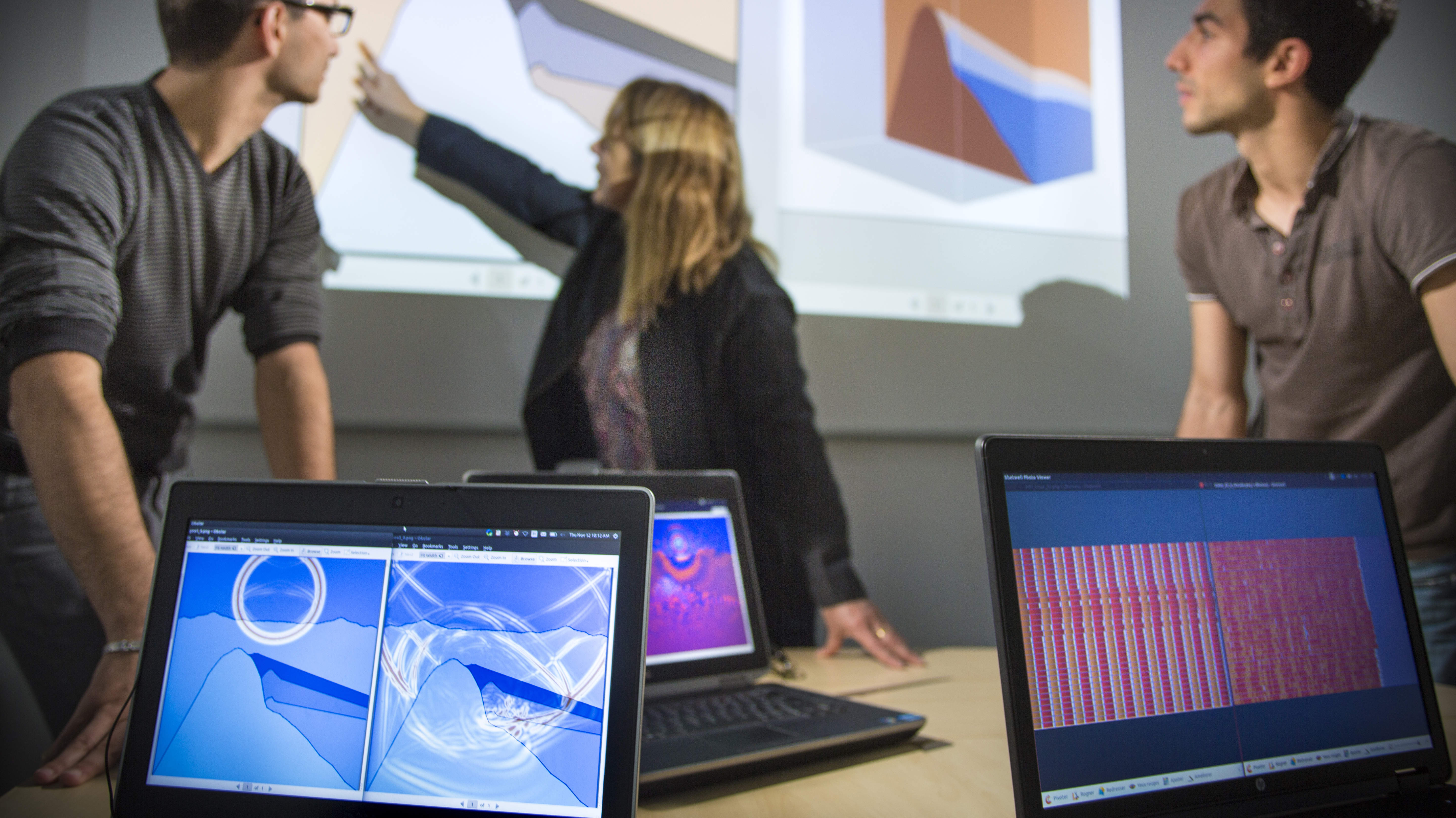Pixil: a cross-border geothermal energy project between France and Spain
Date:
Changed on 04/08/2022

Launched in November 2019, Pixil has reinvigorated the geothermal energy sector in France and Spain, its aim being to characterise the Earth’s subsurface using advanced imaging and mathematical modelling. In France, it is jointly coordinated by Inria’s Magique-3D project team, working in collaboration with Real Time Seismic (RTS), an SME which develops data processing technology for use in geoscience, and Avenia, a centre of excellence for subsurface industries. Then, on the Spanish side of the border, you have the Barcelona Supercomputing Center (BSC), the Basque Center for Applied Mathematics (BCAM) and the University of Barcelona (UB).
The project’s overarching objective is to create a cross-border R&D network linking different research and technology centres in the wider Pyrenees region, which could then become a technology hub in the field of geothermal energy.
As society looks towards a more environmentally sustainable future, clean and renewable energy is becoming increasingly important. Geothermal energy is one form which has some serious advantages: it is natural, it doesn’t emit any CO2 and it is practically infinite. In geothermal energy, the heat of the Earth’s subsurface is used to produce hot water which, once it reaches a sufficiently high temperature, will turn a turbine, converting it into electricity. The subsurface gets hotter the further down you go - in Europe, the temperature gradient averages out at roughly 3°C for every hundred metres.
With uninterrupted availability, geothermal energy works well in conjunction with other sources of renewable energy - such as wind or solar - which are less reliable. And because it can be exploited where it is produced, there is no need to import any technology or raw materials.
But before they are able to use this energy, the researchers and engineers working on the project must first characterise the properties of the subsurface in the region in question. The non-invasive technology used by Pixil involves sending sound waves into the earth and analysing the speed at which they spread and any “obstacles” they encounter, allowing 3D images of the subsurface to be constructed. This preparatory work helps to maximise the chances of success for the drilling stage, which is required in order to set up the geothermal loop needed for exploitation (hot water is produced - heat is extracted - cold water is pumped back in).
Verbatim
“We use sensors to measure the propagation of the sound waves through the subsurface before analysing the data. This ‘seismic ultrasound’ can then be used to characterise the area in terms of the geometry of the structures found within it and the density of the rocks."
Auteur
Poste
researcher within the project-team Magique-3D, head of the algorithm component of the project.
In order to arrive at precise simulations of the propagation of waves through the subsurface, mathematical models, advanced digital technology and parallel computation are needed in order to analyse and process the data.
But there is still one major problem. Seismic data is often badly “polluted” by the high amplitude waves which rise to the surface when the seismic noise source is triggered. These have a significant impact on the quality of the signals recorded by the sensors on the surface, often making it impossible to obtain quality images at the very lowest depths. So, how can this problem be solved? Inria’s researchers employ the latest in inversion technology to identify the geological model that best corresponds to the propagation of these surface waves. By accurately simulating these phenomena using two of their software (Hou10ni), unwanted signals are reproduced before then being deleted from the actual recordings.
In order to support the creation of a cross-border R&D network made up of public and private bodies, Julien Diaz’s team have made these tools available to universities, research institutes, SMEs and major companies/organisations specialising in geothermal energy in the cross-border region. The Avenia centre of excellence is very much central to this, with its multifaceted team made up of manufacturers, academics and institutions.
Verbatim
Pixil supports the geothermal energy sector through a pooling strategy, helping the transfer of knowledge between academia and businesses in what is a flourishing European context
Auteur
Poste
head of European and International Projects
« In the Pyrenees region, geothermal energy was once felt to be too costly, particularly for deeper sources, and so it was abandoned. Our hope is now to be able to restore interest in it in the south-west of France », adds Julien Diaz.
Jean-Claude Puech, a geophysicist who works for Real Time Seismic, has been keen to stress the importance of educating the wider public about the project. “This is crucial if we want this technology to be accepted and to avoid it being lumped in with other processes, such as fracking.
We have to make sure everyone knows that geothermal energy is both practically infinite and environmentally-friendly. All it actually produces is hot water!
Another aspect of Pixil that is worth mentioning is the questionnaire used to assess any problems encountered over the course of the project. This will help to strengthen the network and, it is hoped, to obtain national financial support. The partners tasked with marketing solutions developed by Pixil will then evaluate the results and use these to guide any future developments. In the long-term, technological advances will make geothermal energy more competitive, in addition to stimulating the regional economy and helping to drive forward sustainable development.